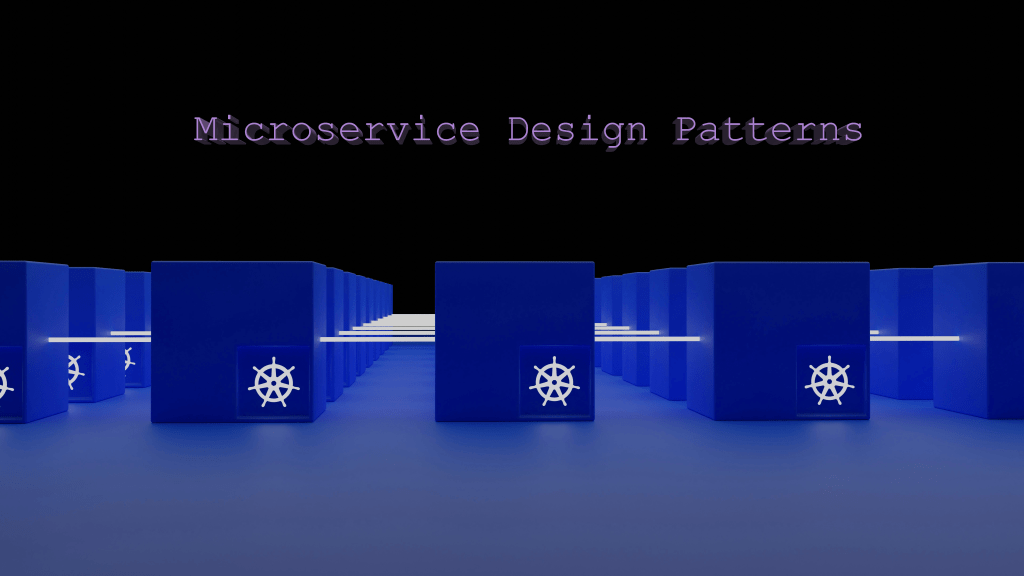Optimizing AI Systems: Essential Microservice Design Patterns
Welcome to the realm of Microservice AI patterns—a world where scalability, modularity, and efficiency take center stage. Here, we delve into the intricacies of designing separate services dedicated to model training, inference, and data management. Join us on a journey of crafting intelligent systems with precision and flexibility.
1. Essential Microservice Design Patterns for AI Development
In this comprehensive guide, we’ll navigate through ten indispensable microservice design patterns crucial for the seamless development of AI solutions. Each pattern plays a pivotal role in ensuring efficiency, robustness, and scalability, laying the foundation for successful AI implementations.
1. Service Mesh Architecture: Enhancing Communication
Microservices often communicate with each other, and a Service Mesh Architecture streamlines this interaction. It acts as a communication layer, managing the complexities of service-to-service communication. Imagine a recommendation engine microservice seamlessly coordinating with a user authentication microservice to enhance user experience in an e-commerce platform.
2. Event Sourcing: Tracking System State Changes
Event Sourcing captures and stores all changes to an application’s state as a sequence of events. This pattern is particularly powerful in AI applications where tracking changes in model training, for example, is essential. Think of an AI-driven chatbot learning from user interactions, with each conversation triggering an event that shapes its evolving knowledge.
3. CQRS (Command Query Responsibility Segregation): Optimal Data Handling
CQRS separates the read and write operations, providing flexibility in handling different data processing needs. In AI development, this can be illustrated by a recommendation engine. The ‘write’ side updates user preferences, while the ‘read’ side retrieves personalized recommendations efficiently.
4. Bulkhead Pattern: Isolating Failures
Just as a ship’s bulkhead prevents a breach from affecting the entire vessel, the Bulkhead Pattern isolates failures in microservices. In an AI application, if one microservice experiences a failure during model training, the Bulkhead Pattern ensures it doesn’t disrupt the entire system, maintaining overall reliability.
5. Saga Pattern: Ensuring Transactional Consistency
The Saga Pattern manages complex, distributed transactions by breaking them into smaller, manageable steps. In an AI system, during model deployment, the Saga Pattern ensures consistent transitions between stages, avoiding inconsistencies in the deployed model.
6. API Gateway: Streamlining Communication
An API Gateway acts as a single entry point for various microservices, simplifying communication and handling diverse requests. In an AI-driven analytics platform, an API Gateway consolidates requests from different services, ensuring a streamlined flow of data and insights.
7. Fault Tolerance: Resilience in the Face of Failures
Fault Tolerance ensures that a system can gracefully handle failures without catastrophic consequences. For AI solutions, this means that even if one microservice encounters a temporary issue, the overall system remains operational, allowing for uninterrupted model training or inference.
8. Database Sharding: Scaling Data Management
Database Sharding involves horizontally partitioning data across multiple databases, optimizing data retrieval. In an AI application managing vast datasets, this pattern facilitates efficient storage and retrieval of training data, enhancing the overall scalability of the system.
9. Chaos Engineering: Proactive System Testing
Chaos Engineering involves intentionally introducing controlled failures to assess a system’s resilience. In AI development, this pattern helps identify potential weaknesses in microservices, allowing teams to proactively address and fortify the system against unexpected challenges.
10. Polyglot Persistence: Diverse Data Storage
Polyglot Persistence acknowledges that different data storage solutions may be best suited for different microservices. In an AI system, this could mean using a specialized database for storing training data, while employing a separate database optimized for fast querying during inference.
2. Conclusion: Paving the Way for Advanced AI Architectures
In concluding our exploration of essential microservice design patterns for AI development, we’ve uncovered the architectural principles that underpin efficient, robust, and scalable AI solutions. By embracing patterns such as Service Mesh Architecture, Event Sourcing, and API Gateway, developers can navigate the complexities of AI development with confidence. These patterns not only enhance communication and data handling but also ensure resilience and consistency, fortifying the foundation for advanced AI architectures. As we embrace the future of artificial intelligence, these design patterns stand as guiding pillars, shaping the landscape of intelligent and adaptive systems.





